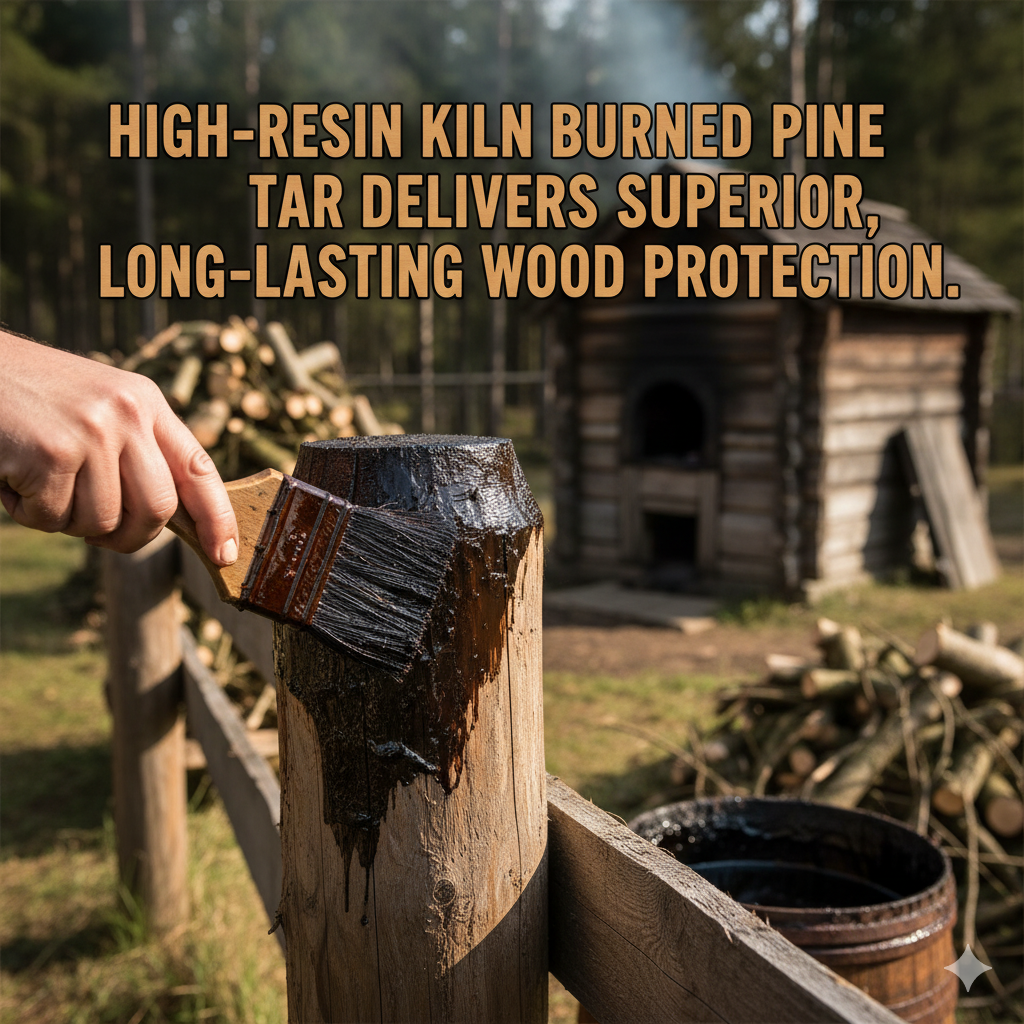When it comes to protecting wood from the elements, few substances have the historical track record and natural efficacy of pine tar. Kiln Burned Pine Tar exemplifies this tradition. For centuries, this resinous material has been used to preserve everything from Viking longships to Scandinavian stave churches. But not all pine tar is created equal. A specific production method, known as kiln burning, elevates pine tar to a premium grade, offering superior protection that other methods can’t match.
Pine tar is nature’s own wood preservative, derived from the resin-rich wood of pine trees. The substance is a complex mixture of compounds, primarily resins and terpenes. Resins are the tree’s defense mechanism, a sticky barrier that protects against injuries and microbial attacks. Terpenes act as a natural solvent within the tar, helping it penetrate wood fibers and accelerating the drying process. The quality of the final pine tar depends entirely on how these valuable components are extracted and preserved.

The Kiln Burning Difference
The traditional method for producing pine tar involves slowly heating pine wood in a controlled, oxygen-poor environment. This process, known as destructive distillation, breaks down the wood and separates its chemical components. The kiln burning method refines this tradition by using a furnace to carefully manage the temperature and heating duration.
This precise control is what sets kiln burned pine tar apart. By heating the wood slowly and at a consistent temperature, the process maximizes the extraction of valuable resins while minimizing their degradation. Other, faster methods of production often use excessively high heat, which can burn away the delicate resins and terpenes, resulting in a lower-quality, less effective product. Kiln burning ensures that the final pine tar retains the highest possible concentration of the natural compounds that give it its protective power.
Higher Resin Content for Maximum Durability
The most significant advantage of kiln burned pine tar is its remarkably high resin content. Resins are the heart of wood protection. When applied, they form a tough, flexible, and breathable layer that shields the wood from its two greatest enemies: moisture and UV radiation.
A higher concentration of resin means a more robust and long-lasting barrier. This dense resinous shield actively repels water, preventing it from seeping into the wood grain where it can cause rot, decay, and fungal growth. Furthermore, the natural pigments within the resin provide excellent protection against the sun’s damaging ultraviolet rays, which can dry out wood, causing it to crack, split, and turn gray over time. By preserving the highest level of resin, the kiln burning process yields a pine tar that offers unparalleled durability, extending the life of any wooden structure.

Deeper Penetration for Inside-Out Protection
For a wood preservative to be truly effective, it must do more than just sit on the surface. It needs to penetrate deep into the wood’s pores to provide comprehensive, long-lasting protection from within. Kiln burned pine tar excels in this regard due to its optimal balance of resins and terpenes.
As mentioned, terpenes act as a natural solvent and thin the tar just enough so the wood fibers can absorb it deeply. The slow, controlled heating of the kiln process preserves these volatile terpenes and prevents them from boiling off or escaping. The result is a pine tar with the perfect viscosity for application—it’s thin enough to soak into the wood but thick enough to deliver a high concentration of protective resins.
This deep penetration means the wood is not just coated, but saturated with a water-resistant, antiseptic barrier. This “inside-out” protection is far more effective at preventing decay than surface-level treatments, which can wear away or chip off, leaving the underlying wood vulnerable.
Better Water Resistance for Harsher Climates
Water is wood’s primary adversary. Whether it comes from rain, snow, or humidity, moisture creates the ideal conditions for mold, mildew, and rot. The superior water resistance of kiln burned pine tar makes it the premium choice for projects exposed to harsh weather conditions.
The dense layer of resins in kiln burned pine tar creates a highly effective hydrophobic barrier. It allows the wood to breathe, letting internal moisture vapor escape, but it prevents external water from getting in. This is a critical distinction from modern synthetic sealants, which can trap moisture inside the wood and actually accelerate decay.
The natural water-repelling properties, combined with the deep penetration, ensure that wood treated with kiln burned pine tar stays drier and healthier for longer. This is why it has been the trusted choice for maritime applications, exterior siding, fences, and decks for generations. It provides a time-tested defense that works in harmony with the wood’s natural structure.
A Legacy of Superior Preservation
Choosing the right wood preservative is an investment in the longevity and beauty of your wooden structures. While many products are available, the traditional, carefully crafted kiln burned pine tar remains the premium standard. Its high resin content, ability to penetrate deeply, and exceptional water resistance provide a level of protection that modern, synthetic alternatives struggle to replicate.
By opting for kiln burned pine tar, you are choosing a product that honors centuries of craftsmanship and leverages the inherent protective qualities of nature. It ensures that your wood is not just covered, but truly preserved, allowing it to withstand the tests of time and weather while retaining its natural character and strength.


